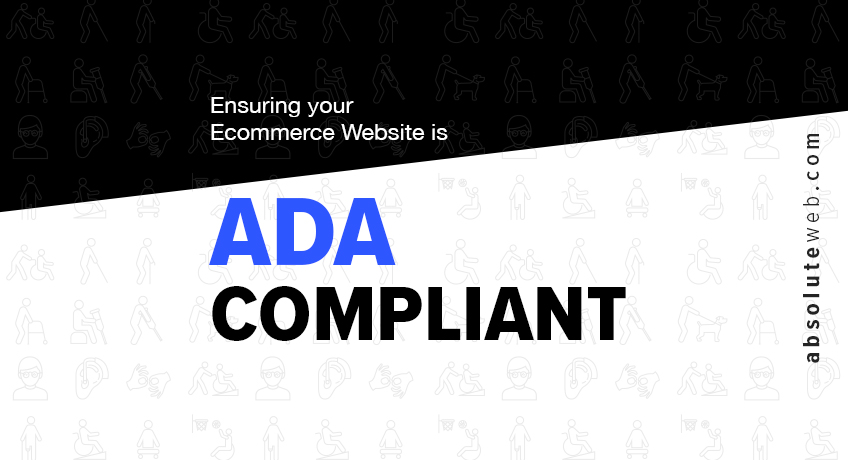Ensuring Your Ecommerce Website is ADA-Compliant
Ensuring Your Ecommerce Website is ADA-Compliant
The Americans with Disabilities Act (ADA) requires certain businesses to make necessary changes and improvements to their websites for individuals with disabilities. The ADA applies to all government agencies and privately run companies or non-profit organizations with 15 or more employees operating for the benefit of the general public. As a company or nonprofit organization, it is important to educate yourself and ensure that your website is ADA-compliant and accessible to all website users, including individuals with disabilities and visual or hearing impairments.

Learn how to make your website useful for all users and better understand the issues that users with disabilities may face, with the following guidelines and suggestions for how to improve your website for accessibility. To view our extended guide, including a few recommendations from our own Absolute Web case study, please visit our website.
While physical accommodations have been highlighted by the ADA, there are also many extended guidelines and requirements for ensuring that website content is accessible to all users.
This essentially means that certain businesses with public websites or ecommerce sites need to make improvements to text, font, text sizes, or screen readers and alternative assistance technology.
For instance, an exceptionally accessible website has an informative UI/UX with user-friendly features such as text and videos, closed captioning, and alternative modifications to make content more accessible to individuals who are blind, deaf, or often navigate content by voice or other assistive and alternative technologies.
Web Content Accessibility Guidelines
Common standards for web content accessibility are known as The Web Content Accessibility Guidelines or WCAG. The U.S. Department of Justice essentially oversees and manages the ADA requirements often referring to and citing recommendations from WCAG as a guide for web content standards for public websites.
In January 2018, new federal regulations went into effect making all federal institutions’ websites required to meet AA compliance on all items in WCAG 2.0. The WCAG 2.0 is considered to be a technical standard that offers content producers ADA website-compliant standard guidelines and criteria to measure the usability and accessibility of websites using the P.O.U.R. approach: Is your website Perceivable, Operable, Understandable, and Robust?
How To Make Websites Accessible to All
The ADA has compiled a helpful toolkit that businesses should consider reviewing to help ensure their website(s) are accessible. The ADA considers and defines website accessibility as having the following elements: webpage, website, web browser, html, screen reader (computer program that speaks written text), html tags, “longdesc” tag, refreshable Braille display, among other features for accessibility and usability.

Below is a list of general website problems and issues compiled by the ADA that may pose a barrier to individuals with disabilities:
- images without text equivalents
- documents not posted in an accessible format
- specifying colors and font sizes
- videos and other multimedia lack accessible features
It’s important that your business identifies any other additional barriers that may exist for individuals with disabilities when it comes to website accessibility. Here are some ways to improve your website, according to the ADA:
- Write a call-out asking for user input on how accessibility can be improved.
- Keep in mind that if you are making content changes, you will have to also make text and image changes to match new images in the “alt tags.”
- Make sure that your staff is trained and up-to-date with the latest ADA-compliant rules.
- Reach out to disability rights organizations that can provide feedback to the services or content provided on your website.
For more information, click here to read our extended guide on how to make your website ADA compliant.




